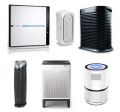Steel Rebar Market - Global Industry Analysis, Size, Share, Growth, Trends
Steel Rebar Market: Snapshot
Steel Rebar, also known as reinforcing bar is widely used in the construction industry, majorly in concrete reinforcement. It serves as a tensioning device and assists to hold the concrete in a compressed state. Concrete can carry a heavy load for compression but is very weak in tension. To allow concrete to carry tensile load, steel rebar is used. Steel rebar is commonly used for concrete construction its thermal co-efficient value is close to the thermal co-efficient value of concrete.
Deformed steel bars, a type of steel rebar, have ribs, lugs, or deformity on the bar surface. These steel bars bind two materials strongly, limit cracks in concrete, avoid slippage and have higher tensile strength than mild steel rebar. Mild steel rebar is used to support the tensile stress of slab beams.
Request a Sample-
https://www.transparencymarketresearch.com/sample/sample.php?flag=S&rep_id=23798
Steel rebar is a cost-effective product that could be used for concrete masonry and concrete reinforcement. Conversely, aluminum is an expensive with less tensile strength alternative for the same applications. However, steel rebar comes with several drawbacks. In the production of steel, various types of wastes are discharged in water which can cause water pollution. Its manufacturing also releases CO2 causing greenhouse effect. It is also responsible for emission of hazardous gases such as nitrogen oxide and sulfur oxide in the air, causing air pollution. The corrosion tendency of steel leads to deterioration of constructions where rebar is used. While these drawbacks will continue posing threat, increasing construction activities worldwide, especially in emerging nations, will keep the demand for steel rebar high in the coming years.
Steel rebar, commonly known as steel reinforcement or reinforced bar, is a steel bar or a mesh of steel wires used in concrete constructions and concrete masonry as a tension device in order to provide support to concrete structures. Concrete exhibits high strength when compressed, but is equally weak under tension. Steel rebar acts as the tensioning device, thus providing strength to concrete structures. It makes these structures stable under strength and tension. Steel is used in concrete reinforcement as it offers high tensile strength and has a thermal co-efficient value, which is close to the thermal co-efficient value of concrete. Furthermore, it is one of the cheaper options that can be used for concrete reinforcement and concrete masonry. Aluminum is a costlier substitute for steel with less tensile strength. However, steel rebar has several disadvantages. These include the corrosion tendency of ferrous materials. This leads to intrinsic deterioration of structures where steel is used. Production of steel adversely affects the environment. For instance, it leads to emission of hazardous gases such as carbon oxides, sulfur oxide, and nitrogen oxide in air. It also is responsible for emission of CO2, thus leading to the greenhouse effect. Production of steel results in discharge of wastes into water, thereby leading to water contamination. The steel rebar market has been expanding due to the rapid infrastructure development, especially in housing, commercial, and industrial infrastructure, in developing nations. The market for steel rebar is expected to expand significantly in the next few years owing to the rapid industrialization in developing nations. There exists a need for substitutes for steel rebar considering its various disadvantages. Some substitutes such as basalt rebar and fiber reinforced polymer are eco- friendly and possess high tensile strength. These substitutes are anticipated to seize some share of the steel rebar market due to the environmental and corrosive effects of steel. Basalt rebar possesses numerous advantages over steel rebar and also has thermal co-efficient almost equal to that of concrete. The industry is experiencing continuous innovations and advancements due to the rapid technological advancements and high end applications of steel rebar. The newer grades that are being introduced are Fe-500, Fe-550, and Fe-500D. Similarly, in terms of application, a newer range of steel rebar that is corrosion resistant, epoxy coated, and earthquake resistant is being used increasingly in applications than the conventional rebar.
Request for covid19 impact analysis –
https://www.transparencymarketresearch.com/sample/sample.php?flag=covid19&rep_id=23798
Based on application at the site of work, the steel rebar market can be segmented into mild steel bars and deformed steel bars. Mild steel bars are used to support the tensile stress of slab beams. Deformed steel bars come with deformity or lugs or ribs on the bar surface. It has higher tensile strength as compared to the mild steel rebar and avoids slippage, limits cracks in concrete, and also binds two materials strongly.
Based on its finish, the steel rebar market can be divided into black rebar, epoxy coated rebar, and fabricated rebar. The use of these finishes depends on the environmental conditions that the bars are subjected to. Black rebar is a conventional uncoated rebar used at sites with minimum exposure to moisture, with minimum chances of catching rust or corrosion. Epoxy rebar is usually found in marine applications where there is a high chance of corrosion due to water. Black rebar is the preferred rebar is widely used owing to its cost effectiveness.
Pre-Book now-
https://www.transparencymarketresearch.com/checkout.php?rep_id=23798<ype=S
In terms of end-use industry, the steel rebar market can be segregated into construction and infrastructure, manufacturing, and oil & gas industry. The construction and infrastructure sector dominates the steel rebar market. The segment is expected to expand during the forecast period due to the rapid development and industrialization in developing countries such as China and India. This is anticipated to result in real estate and infrastructural developments.
In terms of geography, the global steel rebar market can be segmented into Asia Pacific, Europe, Middle East & Africa, North America, and Latin America. The market for steel rebar is dominated by North America owing to the large number of construction activities in the region. Asia Pacific is also a key consumer if steel rebar, led by the rapid industrial and infrastructural development in developing countries such as India and China. This results in the need for steel rebar for housing, industrial construction, and other infrastructural construction. Consumption of steel rebar has increased significantly in Asia Pacific. Europe and Middle East & Africa are the other major consumers of steel rebar.
Major players operating in the global steel rebar market include Arcelor Mittal, Saudi Iron & Steel Co., Tata Steel, and Zamil Steel Holding.
The steel rebar market is expected to expand significantly in North America and developing countries in Asia Pacific due to its cost effectiveness and increase in construction and infrastructure development activities in these regions.
More Trending Report- https://www.prnewswire.com/news-releases/increasing-demand-for-power-to-drive-global-underground-mining-market-to-valuation-of-us-25-bn-by-2027--transparency-market-research-301008293.html







